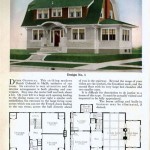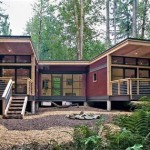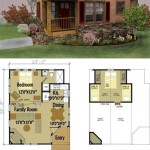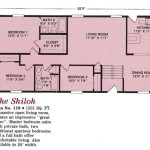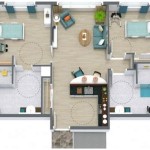Container House Plans refer to architectural blueprints and designs that guide the construction of houses using repurposed shipping containers. These plans provide detailed instructions on assembling, modifying, and integrating shipping containers into a residential structure. Container houses have gained popularity in recent years due to their cost-effectiveness, durability, and eco-friendliness.
For instance, a container house might be designed with multiple shipping containers stacked vertically to create a two-story home. The containers can be modified with windows, doors, and insulation to meet the specific needs of the occupants. The plans would include specifications for the container layout, structural reinforcements, and interior design.
In this article, we will explore the key elements of Container House Plans, including design considerations, structural requirements, and sustainability features. We will also provide insights into the benefits and challenges of building with shipping containers.
Container House Plans involve meticulous planning and design to ensure structural integrity, functionality, and aesthetics.
- Structural Calculations
- Container Modifications
- Interior Layout
- Plumbing and Electrical
- Insulation and Ventilation
- Sustainability Features
- Building Codes
- Cost Considerations
These elements are crucial for creating safe, comfortable, and sustainable container homes.
Structural Calculations
Structural calculations form the cornerstone of Container House Plans, ensuring the stability and safety of the structure. These calculations determine the load-bearing capacity of the containers and the necessary reinforcements to withstand various forces.
- Dead Load:
Dead load refers to the weight of the container itself, any permanent fixtures, and the materials used for modifications. Accurate calculations are essential to ensure the foundation can support the weight of the structure.
- Live Load:
Live load accounts for the weight of occupants, furniture, appliances, and any other movable objects within the container house. These calculations ensure the structure can withstand everyday use and prevent overloading.
- Wind Load:
Wind load calculations are crucial in areas prone to high winds or hurricanes. Engineers determine the wind forces acting on the structure and design reinforcements to resist wind uplift and lateral forces.
- Seismic Load:
In earthquake-prone regions, structural calculations must account for seismic forces. Engineers design the container house to withstand ground shaking and minimize the risk of collapse or damage.
Precise structural calculations are vital for ensuring the longevity and safety of container houses. They provide a solid foundation for the construction process and give homeowners peace of mind knowing their home is built to withstand various environmental and load conditions.
Container Modifications
Container modifications are an integral aspect of Container House Plans, transforming standard shipping containers into habitable and functional living spaces. These modifications involve cutting openings for windows, doors, and ventilation, as well as adding insulation, electrical wiring, and plumbing systems.
Window and Door Cutouts:
Precise cutouts are made in the container walls to accommodate windows and doors. These openings provide natural light, ventilation, and access to the outdoors. Engineers ensure that the cutouts maintain the structural integrity of the container and reinforce the openings as necessary.
Insulation and Vapor Barrier:
Insulation is crucial for regulating temperature and reducing energy consumption in container houses. Various insulation materials, such as spray foam, fiberglass, or cellulose, are installed within the container walls, roof, and floor. A vapor barrier is also added to prevent moisture penetration and condensation.
Electrical Wiring and Plumbing:
Electrical wiring and plumbing systems are essential for the functionality of container houses. Electricians install wiring for lighting, appliances, and outlets, while plumbers connect pipes for water supply and drainage. These systems are designed to meet building codes and ensure the safety and comfort of the occupants.
Container modifications provide endless possibilities for customization, allowing homeowners to create unique and personalized living spaces. From adding balconies and decks to installing skylights and green roofs, the modifications can enhance the aesthetics, functionality, and sustainability of container houses.
Paragraph after details
By carefully planning and executing container modifications, homeowners can transform shipping containers into comfortable, energy-efficient, and aesthetically pleasing homes.
Interior Layout
Interior layout is a crucial aspect of Container House Plans, determining the functionality, comfort, and aesthetics of the living space. Careful planning is required to optimize the use of space and create a cohesive and inviting environment.
- Space Planning:
Space planning involves dividing the interior of the container house into different functional areas, such as bedrooms, bathrooms, kitchen, and living room. The layout should consider the flow of movement between spaces, ensuring a smooth and efficient daily routine.
- Furniture Selection:
Furniture selection is essential for maximizing space utilization and creating a comfortable living environment. Multi-functional furniture, such as sofa beds and ottomans with built-in storage, can save space and add functionality. Custom-built furniture can also be designed to fit the unique dimensions of the container house.
- Vertical Storage:
Vertical storage solutions are key to maximizing space in container houses. Wall-mounted shelves, hanging organizers, and loft beds can create additional storage without taking up valuable floor space. Vertical gardens can also be incorporated to add greenery and purify the air.
- Natural Light:
Natural light not only brightens up the interior but also creates a sense of spaciousness. Container House Plans should incorporate ample windows to allow for natural light to penetrate the space. Skylights can also be added to enhance natural lighting and create a more airy atmosphere.
By carefully considering these factors, interior layout can transform a container house into a comfortable, functional, and aesthetically pleasing living space that meets the specific needs and preferences of the occupants.
Plumbing and Electrical
Plumbing and electrical systems are essential components of Container House Plans, ensuring the functionality, comfort, and safety of the living space. Careful planning and execution are required to integrate these systems seamlessly into the container structure.
- Water Supply:
Water supply systems in Container House Plans involve connecting the container to a municipal water source or installing a well and water storage tank. Pipes are run throughout the container to supply water to fixtures such as sinks, showers, and toilets.
- Drainage and Waste:
Drainage and waste systems are designed to remove wastewater from the container house. Pipes are installed to collect wastewater from fixtures and direct it to a septic tank or municipal sewer system. Proper ventilation is also crucial to prevent moisture buildup and unpleasant odors.
- Electrical Wiring:
Electrical wiring systems in Container House Plans ensure the safe and efficient distribution of electricity throughout the structure. Wires are run through conduits and connected to outlets, switches, and lighting fixtures. Electrical panels are installed to control the flow of electricity and protect against overloads.
- Lighting and Appliances:
Lighting and appliances are essential for creating a comfortable and functional living space in a container house. Lighting fixtures, such as recessed lights, pendant lights, and wall sconces, provide illumination. Appliances, such as refrigerators, stoves, and dishwashers, are connected to the electrical system to provide modern conveniences.
By carefully considering these aspects, plumbing and electrical systems can be seamlessly integrated into Container House Plans, ensuring a safe, comfortable, and modern living environment.
Insulation and Ventilation
Insulation is crucial in Container House Plans for regulating temperature and reducing energy consumption. The unique structure of shipping containers, with their metal walls and minimal insulation, necessitates careful consideration of insulation strategies.
Various insulation materials can be used, including spray foam, fiberglass, and cellulose. Spray foam provides excellent insulation value and air sealing, but it requires professional installation. Fiberglass batts are a cost-effective option that is easy to install, while cellulose insulation made from recycled paper offers soundproofing and fire-resistant properties.
Proper insulation not only improves thermal comfort but also reduces energy costs for heating and cooling. By minimizing heat transfer through the container walls, insulation helps maintain a stable indoor temperature, reducing the reliance on HVAC systems.
Insulation should be installed in all areas of the container house, including walls, roof, and floor. It is important to ensure that there are no gaps or air leaks, as these can compromise the effectiveness of the insulation.
Ventilation is equally important in Container House Plans to maintain good indoor air quality and prevent moisture buildup. Proper ventilation ensures a healthy and comfortable living environment, free from stale air, odors, and pollutants.
Natural ventilation can be achieved through windows, doors, and vents. Cross-ventilation, where air flows through opposite openings, is particularly effective in promoting air circulation. Mechanical ventilation systems, such as exhaust fans and air exchangers, can supplement natural ventilation, especially in areas with limited airflow.
Adequate ventilation also helps prevent condensation and mold growth, which can damage the container structure and affect the health of occupants. Moisture can accumulate due to activities such as cooking, showering, and breathing. Proper ventilation removes excess moisture and prevents it from condensing on cold surfaces.
By incorporating effective insulation and ventilation strategies into Container House Plans, homeowners can create comfortable, energy-efficient, and healthy living spaces within their repurposed shipping containers.
Proper insulation and ventilation are essential aspects of Container House Plans, ensuring thermal comfort, energy efficiency, and a healthy indoor environment. Careful consideration of these factors during the planning and construction phases leads to sustainable and livable container homes.
Sustainability Features
Sustainability is a key consideration in modern architecture, and Container House Plans offer unique opportunities for incorporating eco-friendly features. By utilizing repurposed shipping containers, reducing energy consumption, and implementing renewable energy sources, homeowners can create sustainable living spaces with a reduced environmental impact.
Recycled Materials and Reduced Waste: Shipping containers are inherently sustainable as they are made from recycled steel. By reusing these containers for housing, construction waste is significantly reduced compared to traditional building methods. Additionally, the modular nature of containers minimizes material waste during construction.
Energy Efficiency: Container House Plans can incorporate various energy-efficient measures to reduce energy consumption. High-performance insulation, energy-efficient appliances, and natural ventilation strategies help maintain a comfortable indoor temperature while minimizing reliance on heating and cooling systems.
Renewable Energy: Container homes can be equipped with renewable energy systems to further reduce their environmental footprint. Solar panels can be installed on the roof to generate electricity, while solar thermal collectors can provide hot water. Wind turbines can also be used to harness wind energy and generate electricity.
By incorporating these sustainability features into Container House Plans, homeowners can create eco-friendly living spaces that minimize their carbon footprint, reduce energy consumption, and promote a healthier environment. Sustainable container homes not only offer unique architectural designs but also contribute to a more sustainable future.
Building Codes
Building codes play a crucial role in ensuring the safety, structural integrity, and habitability of Container House Plans. These codes establish minimum standards for design, construction, and materials used in residential buildings, including container homes.
When designing and constructing container houses, adherence to building codes is essential to obtain building permits, ensure the safety of occupants, and maintain property value. Building codes vary across different regions and municipalities, so it is important to consult with local authorities to determine the specific requirements applicable to your project.
Building codes typically address various aspects of container house construction, including:
- Structural Requirements: Codes specify the minimum structural requirements for container homes, including load-bearing capacity, wind resistance, and seismic performance. Engineers must ensure that the container structure meets these requirements to withstand various environmental forces and provide a safe living environment.
- Fire Safety: Building codes mandate fire safety measures to minimize the risk of fire and protect occupants in case of a fire. These measures include fire-resistant materials, smoke detectors, and emergency exits.
- Electrical and Plumbing Systems: Codes regulate the installation of electrical and plumbing systems to ensure safety and functionality. Electrical systems must meet electrical codes to prevent electrical hazards, while plumbing systems must comply with plumbing codes to ensure proper water supply and drainage.
- Energy Efficiency: Building codes often include energy efficiency requirements to promote sustainable construction. These requirements may specify minimum insulation levels, energy-efficient appliances, and renewable energy systems.
Understanding building codes and incorporating them into Container House Plans is essential for creating safe, habitable, and code-compliant container homes. By working with architects, engineers, and local building officials, homeowners can ensure their container house meets all applicable building codes and provides a comfortable and secure living space.
Cost Considerations
Cost is a crucial factor to consider when planning a Container House project. While container homes offer potential cost savings compared to traditional construction methods, there are various factors that can influence the overall cost of your project.
- Container Acquisition:
The cost of acquiring shipping containers varies depending on factors like size, condition, and availability. Used containers are typically more affordable than new containers, but may require additional modifications or repairs.
- Site Preparation and Foundation:
Preparing the building site and installing a foundation can add to the cost. Site preparation may involve land clearing, grading, and installing utilities. The type of foundation required will depend on factors like soil conditions and local building codes.
- Modifications and Materials:
The extent of modifications required to transform containers into habitable spaces can significantly impact the cost. This includes cutting openings for windows and doors, adding insulation, installing electrical and plumbing systems, and finishing the interior and exterior.
- Labor Costs:
Labor costs for constructing a container house can vary depending on the complexity of the project and the local labor market. Hiring skilled contractors for tasks like welding, plumbing, and electrical work can add to the overall cost.
Additional factors that can influence the cost of Container House Plans include architectural design fees, permits, inspections, and contingencies for unexpected expenses. It is important to carefully consider all these factors when budgeting for your container home project.










Related Posts

